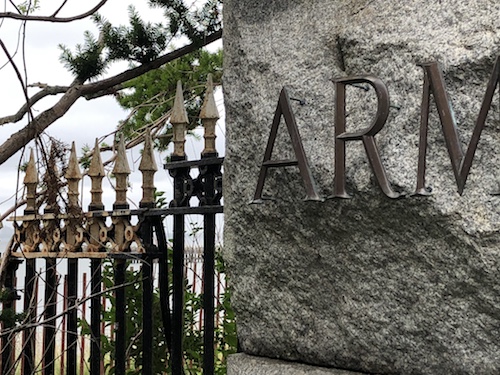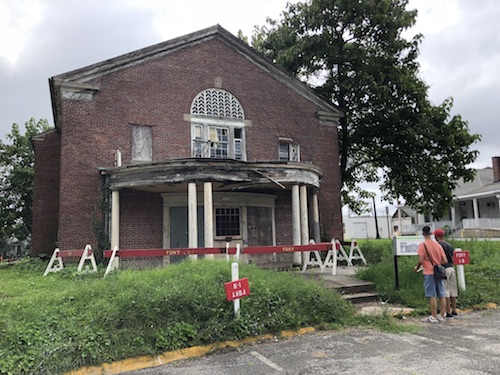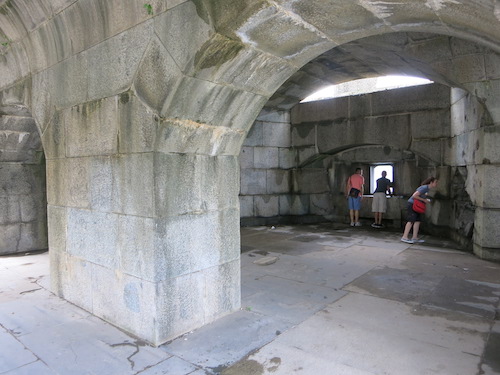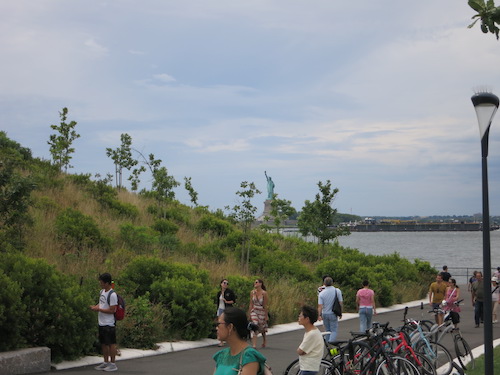Every one of New York City's hundreds of parks has something interesting about it – features, history, sometimes both. Fort Totten Park in northeast Queens is a multifaceted curiosity – a weird combination of park, fortress, and mostly-abandoned village.

Fort Totten itself was never deployed defensively in wartime. The original 1857 design, ironically by none other than Robert E. Lee, was outdated almost before it was built, and while construction began during the Civil War, the fort was never needed as such, as the South never attacked New York City. Right now, though, in the park that surrounds the old fort, there's a bit of a war going on as the long, humid summer of 2018 wears on (more on that later).
You wouldn't know it from a walk around the quiet grounds. These 60 acres lounge peacefully at the tip of the Willets Point peninsula, where the East River ends drooping into Little Neck Bay off the Long Island Sound. The U.S. Army Reserve and the NYC Fire Department still use some of the facilities here, but many of the buildings in this former army installation sit abandoned and slowly decaying.

By the parking lot there's a long pier and a good view of the Throgs Neck Bridge.


A nice big flowerbed greets you a short way inside, along with some picturesque trees.


But much of the park looks like an abandoned neighborhood – because it is. As with Governors Island, a whole military community used to live here. Unlike Governors Island, all, or at least most, of the old buildings here still stand – though some look like they could topple any minute. (AbandonedNYC has some great interior shots.)


Some architecturally worthy buildings have been maintained and look good. The Castle, now home to the Bayside Historical Society, is a New York City landmark and listed on the National Register of Historic Places. It used to be the Army Corps of Engineers' Mess Hall and Club.

The visitors' center, in the former ordnance building, houses some interesting 19th-century infrastructure, and a small museum with informational displays and an eclectic collection of historical ephemera.


Behind it a row of batteries held supplies. The sign on the right reads "Torpedo Battery." ("Torpedo" in the 19th century meant a mine – undersea warfare hadn't been invented.)

Some of these spaces are open to explore.


Around the side of the building, a long tunnel leads to the Water Battery, the large fortified structure on the water that we think of as the fort itself. Graffiti in the tunnel dates from the Spanish-American War period.



Higher levels were envisioned, but new ballistics made the walls obsolete, and the fort was never completed as planned. A century and a half later, the environs are overgrown. There's even a stairway that now leads nowhere. But the structure itself was renovated in 2005 and made safe – so safe that in this litigious age, its heights are remarkably open to exploration.


Come back out through the tunnel and make your way to the water's edge and you're rewarded with a view across Little Neck Bay of some of Long Island's North Shore mansions. This is the new-money "West Egg" peninsula of F. Scott Fitzgerald's The Great Gatsby.

There was no West Egg action on view. But we did get a ringside seat to a violent bird-fight for dibs on a rock just offshore.

And as I mentioned at the top, a human conflict is brewing too. A stranger to the Bayside neighborhood has founded a Fort Totten Park Conservancy without consulting local politicians or existing community groups like The Friends of Fort Totten Parks and the Bayside Historical Society, but with, it seems, tacit approval from the Parks Department.
How might this incipient tussle fit in with the Parks Department's "master plan?" According to a sign in the visitors' center, Parks is "in the midst of embarking on" (a carefully worded phrase if I ever read one) a plan involving a re-landscaping of the northern part of the park, tearing down 18 1950s "Capeheart" townhouses, preserving three, and building a new playground. Possible future projects include "an outdoor performance area, a Veterans' Garden, and a comfort station." (The current bathrooms are in a temporary trailer-like structure.)
For now, the Water Battery remains the crown on the raggedly regal body we call Fort Totten Park. On the hot summer weekend of our visit, we encountered only a few handfuls of people, though there appeared to be a nice little crowd at the pool. Since the subway doesn't come up here, many Manhattanites, Brooklynites, and other New Yorkers don't even know this place exists. They should.
All photos © Jon Sobel, Critical Lens Media















































